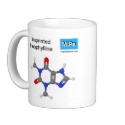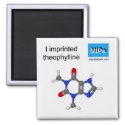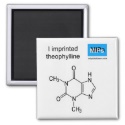|
|
Reference type: Journal
Authors: Kyzas GZ, Bikiaris DN, Lazaridis NK
Article Title: Selective separation of basic and reactive dyes by molecularly imprinted polymers (MIPs).
Publication date: 2009
Journal: Chemical Engineering Journal
Volume: 149
Issue: (1-3)
Page numbers: 263-272.
DOI: 10.1016/j.cej.2008.11.002
Alternative URL: http://www.sciencedirect.com/science/article/B6TFJ-4TWVX4H-3/2/462cf9438769b9851e95ecaf1fe9e156
Abstract: In this study, two water-compatible molecularly imprinted polymers (MIPs) were prepared for the selective adsorption of a Reactive Red (RR) and Basic Red dye (BR). The preparation of BR-MIP was carried out in organic medium, while the preparation of RR-MIP in aqueous medium. Characterization of the obtained dye--MIPs was achieved by FTIR spectra, SEM micrographs, and swelling experiments. Kinetic experiments were successfully described by the intraparticle diffusion model. Equilibrium experiments, at various temperatures, were described by the Freundlich model. The process was endothermic and could be classified as electrostatic adsorption. The effect of pH on adsorption and desorption was studied, as well as a potential adsorption/rebinding mechanism of dyes by MIPs is also proposed. The regenerability of MIPs was affirmed in four sequential cycles of adsorption/desorption, without significant loss in adsorption capacity. Selectivity experiments showed the high affinity of target molecules over competitive dyes for the respective MIPs
Template and target information: Reactive Red, RR, Basic Red, BR
Author keywords: molecular imprinting, selective adsorption, Basic dyes, Reactive dyes, isotherms, kinetics, Real effluents
|


 theophylline template mug ball and stick
theophylline template mug ball and stick







 I imprinted theophylline magnet ball and stick
I imprinted theophylline magnet ball and stick







 I imprinted theophylline magnet
I imprinted theophylline magnet






